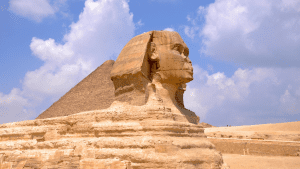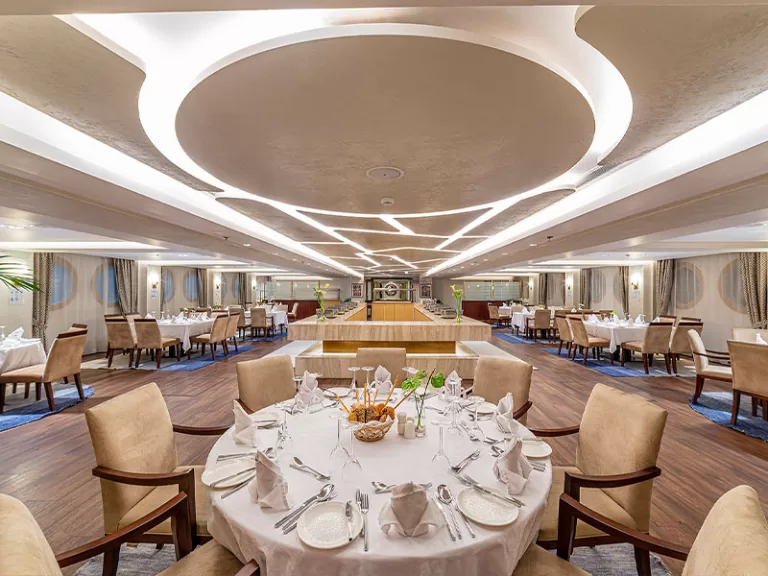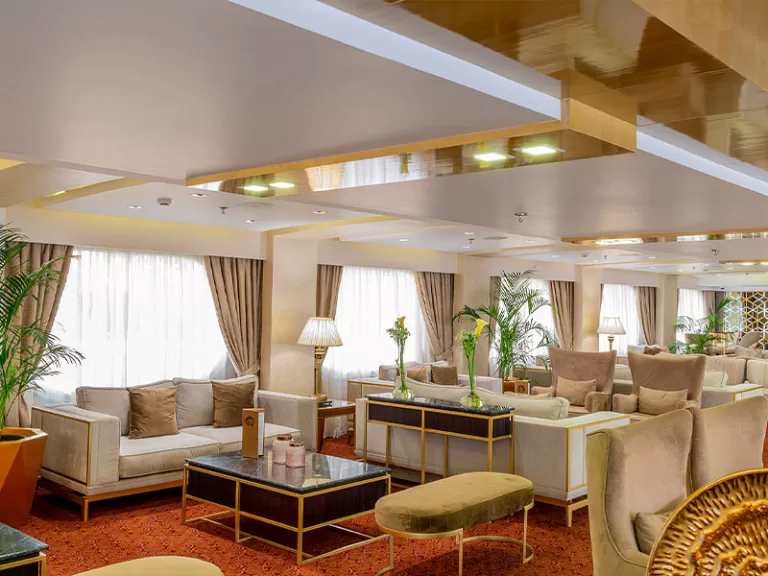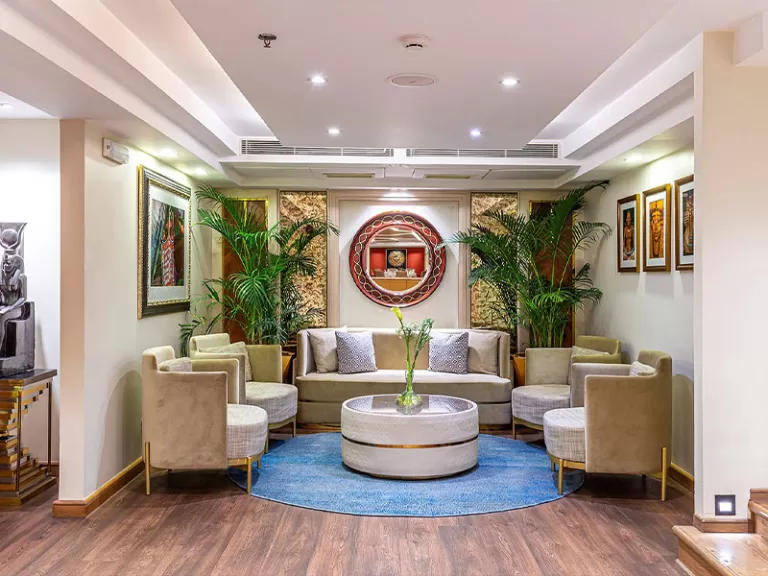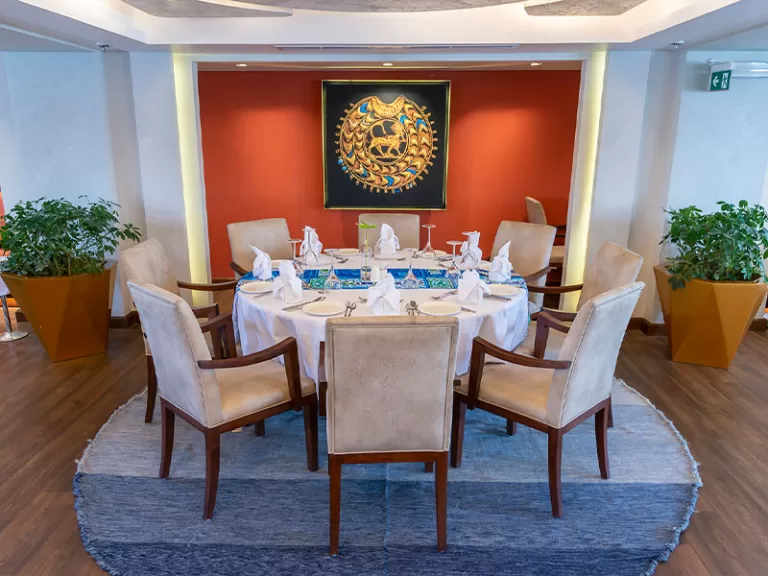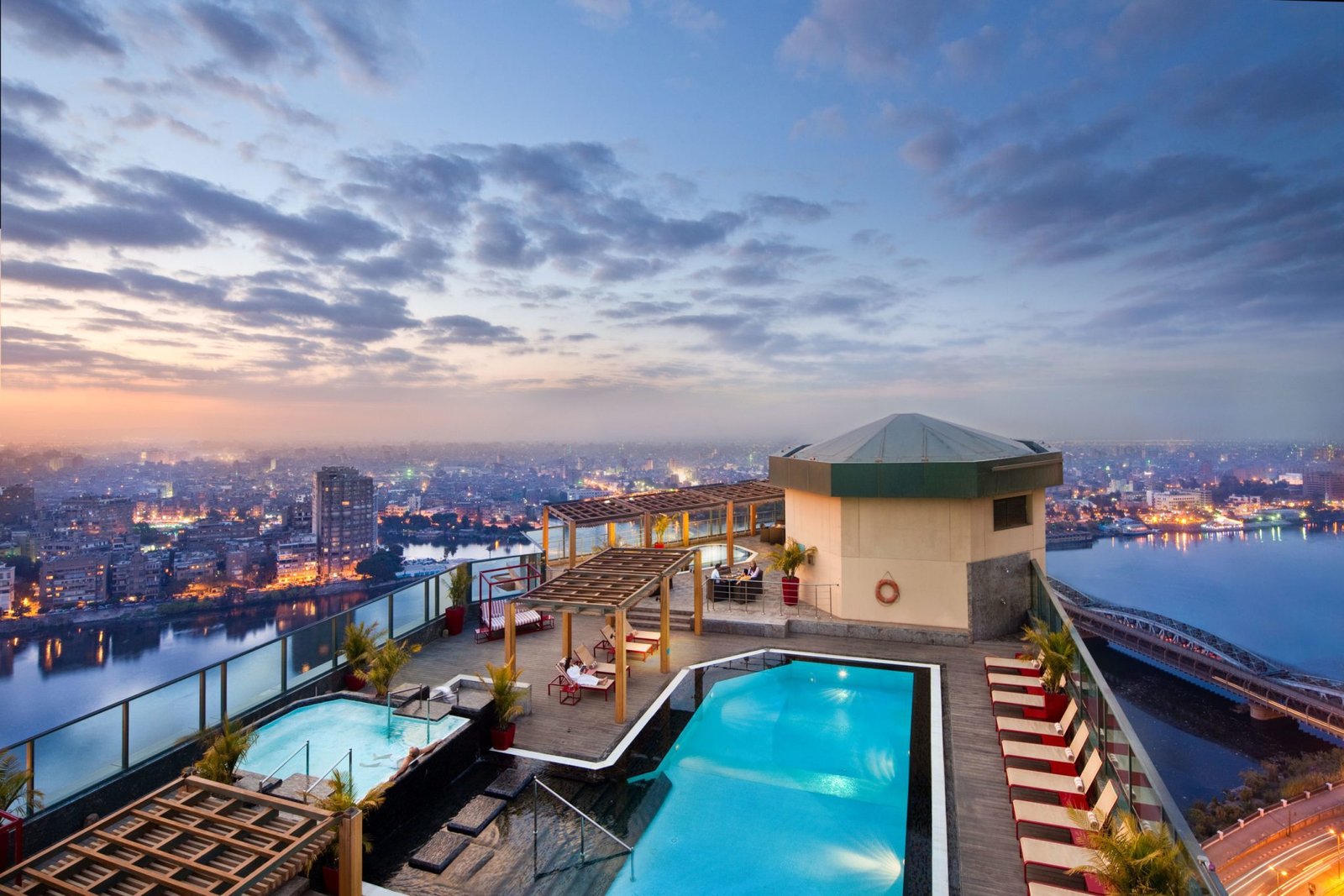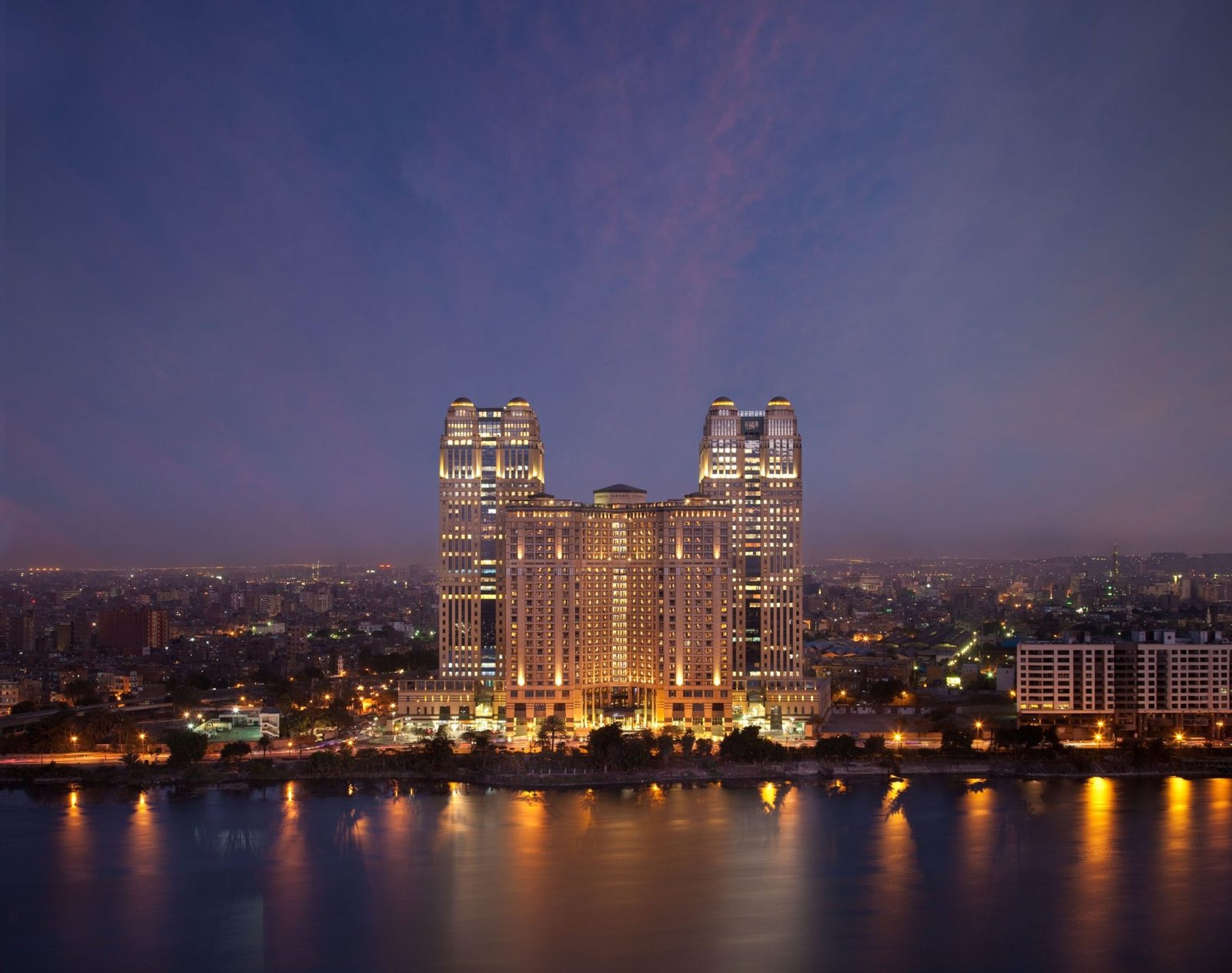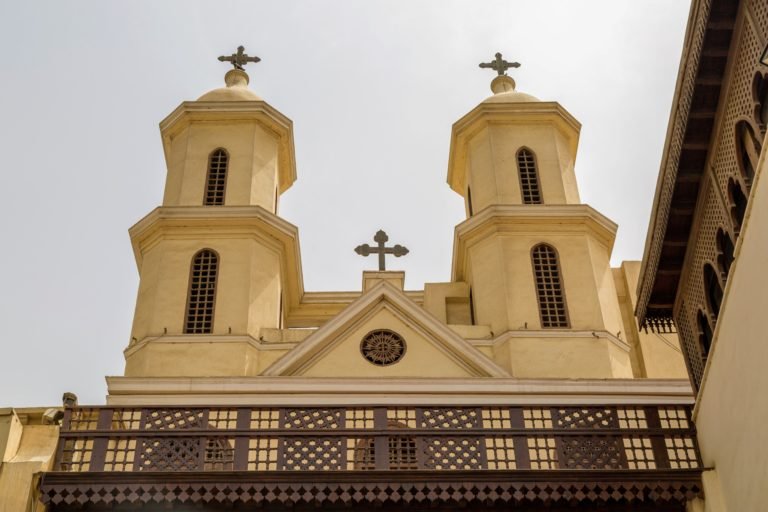
Home » Weekly Blog » Suspended in Time: Exploring the Hanging Church of Cairo, Egypt
Suspended in Time: Exploring the Hanging Church of Cairo, Egypt
Table of Contents
Introduction
In the heart of Cairo, where the whispers of history dance with the pulse of modern life, stands a remarkable monument—a church seemingly suspended in time and space. Known as the Hanging Church, or Al-Muallaqa in Arabic, this ancient structure is not just a place of worship but a profound testament to the resilience, faith, and artistic grandeur of Egypt’s Coptic Christian community. Perched high above the remnants of a Roman fortress, the Hanging Church beckons travelers to explore its storied past, awe-inspiring architecture, and enduring spiritual significance.
For those with a passion for history, architecture, or spiritual exploration, the Hanging Church offers an unparalleled glimpse into Egypt’s rich cultural tapestry. At Ancient Navigator, we believe in not just visiting a destination but truly understanding its soul. That’s why we’ve made this iconic church an optional but highly recommended excursion for our guests exploring Cairo. Join us as we delve into the captivating story of the Hanging Church—a story that spans centuries, cultures, and continents, and one that will leave you inspired, enlightened, and deeply connected to the ancient heart of Egypt.
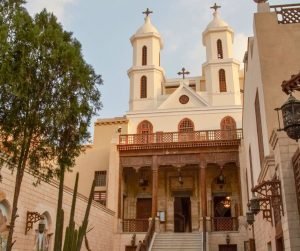
Historical Overview
Origins and Construction
The Hanging Church, officially known as the Church of the Virgin Mary, dates back to the 3rd century AD, making it one of the oldest Christian churches not just in Egypt but in the world. Its name, Al-Muallaqa, literally means “The Suspended,” a moniker derived from its unique location atop the southern gate of the Roman Fortress of Babylon. This fortress was once a critical military outpost for the Romans in Egypt, strategically positioned to control access along the Nile.
The decision to build the church on this elevated position was as much practical as it was symbolic. In a time when Christians were often persecuted, the fortress provided a level of security. Moreover, its height symbolized a spiritual ascension, a reaching towards the heavens, fitting for a place of worship. The church was constructed using materials salvaged from earlier Roman and Pharaonic structures, including massive blocks of stone and timber beams, making it not only a marvel of engineering but also a bridge between different epochs of Egyptian history.
As you step inside, it’s hard not to be struck by the thought that you’re standing on the same stones that have borne witness to nearly two millennia of human history. From the Roman soldiers who once patrolled the fortress walls to the countless pilgrims who have prayed within its sanctuary, the Hanging Church is a living testament to the enduring legacy of faith in Egypt.
Role in Coptic Christianity
The Hanging Church holds a special place in the hearts of Coptic Christians. Throughout its long history, it has been a bastion of Coptic Orthodox faith, serving not only as a place of worship but also as a center of religious authority. In fact, for many years, it was the official residence of the Coptic Orthodox Patriarchs of Alexandria, making it the de facto headquarters of the Coptic Church.
This church has also been the site of numerous significant events in the history of Coptic Christianity. For instance, it was here that the patriarchs were enthroned, a tradition that continued until the 11th century. The church’s role in the preservation and promotion of Coptic culture cannot be overstated. It has been a symbol of the Coptic community’s resilience, particularly during periods of persecution and hardship.
Over the centuries, the Hanging Church has been a beacon of hope for Copts in Egypt. It has witnessed invasions, dynastic changes, and even attempts to suppress Christianity in the region. Yet, through it all, the church has stood firm, a testament to the enduring spirit of the Coptic people and their unwavering faith.
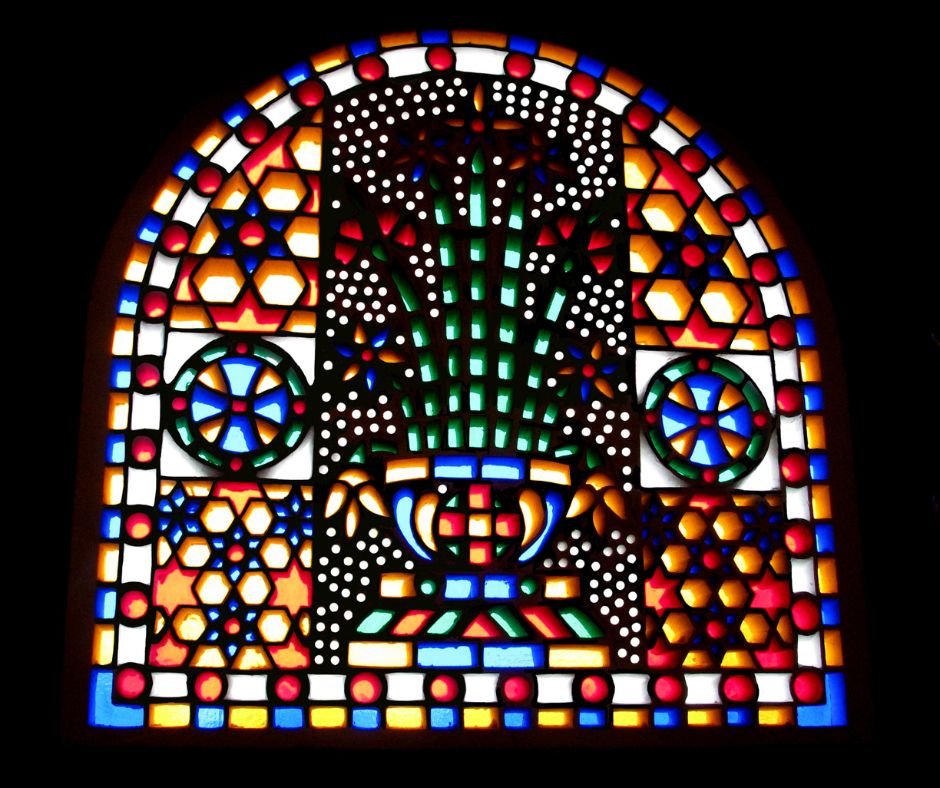
Architectural Marvels
Unique Structure
One of the most striking aspects of the Hanging Church is its architectural design. Unlike many other ancient churches, which are grounded firmly on terra firma, the Hanging Church appears to float above the ground. This illusion is created by the church’s construction atop the ruins of the Roman gatehouse, supported by massive palm tree trunks and layers of stone and brickwork. This elevated position not only gave the church its name but also added to its mystical aura.
The entrance to the church is through a narrow, steep staircase, which only adds to the feeling of ascending into a sacred space. Once inside, visitors are greeted by a structure that is as much a work of art as it is a place of worship. The church is laid out in a traditional basilica style, with a central nave flanked by two side aisles. The wooden roof, designed to resemble the inverted hull of a ship, is particularly noteworthy. This design is believed to symbolize Noah’s Ark, a theme that resonates deeply in Christian symbolism as a representation of salvation and divine protection.
The wooden beams of the roof are supported by 13 pillars, each representing Christ and his apostles. The 12 pillars for the apostles are uniform, while the one for Judas is made from black stone to signify his betrayal. The attention to detail in the architectural design is astounding, with every element serving both a structural and symbolic purpose.
Interior Design and Artifacts
The interior of the Hanging Church is a veritable treasure trove of religious art and artifacts. The walls are adorned with intricate Coptic icons, many of which date back to the 8th century. These icons depict scenes from the Bible, the lives of the saints, and the Virgin Mary, to whom the church is dedicated. The art is characterized by its vivid colors, detailed craftsmanship, and the spiritual intensity that emanates from the faces of the saints and holy figures.
The sanctuary, located at the eastern end of the church, is particularly impressive. It is separated from the nave by a beautiful wooden screen, known as an iconostasis, which is inlaid with ivory and decorated with crosses and geometric patterns. This screen is a masterpiece of Coptic art, serving as both a visual focal point and a symbolic barrier between the earthly and the divine.
Within the sanctuary, the altar is made from marble and is covered with a richly embroidered cloth. Above it hangs a large icon of the Virgin Mary, surrounded by smaller icons of angels and saints. The sanctuary also houses several religious relics, including the remains of early Coptic martyrs. These relics are revered by the faithful, who believe in their power to intercede on behalf of those who pray to them.
In addition to its religious significance, the interior of the Hanging Church is also a testament to the skill and creativity of the Coptic artisans who crafted it. The combination of architectural ingenuity, artistic beauty, and deep spirituality makes the Hanging Church a truly unique and awe-inspiring place.
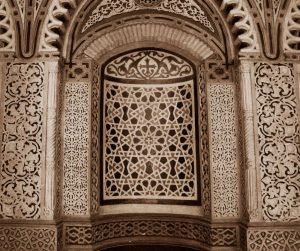
Spiritual Significance
Sacred Atmosphere
Walking into the Hanging Church is like stepping into a different world—a world where the hustle and bustle of Cairo’s streets seem to fade away, replaced by a sense of peace and sanctity. The church’s elevated position not only gives it a commanding view of the surrounding area but also imbues it with a sense of detachment from the earthly concerns below. This feeling is enhanced by the church’s serene interior, where the soft glow of candlelight illuminates the icons and casts flickering shadows on the ancient walls.
For many visitors, the Hanging Church is more than just a historical monument; it is a place of spiritual refuge. The church continues to be an active place of worship, and it is not uncommon to see Coptic Christians praying, lighting candles, or attending services. The church’s spiritual atmosphere is palpable, drawing believers and non-believers alike into a contemplative state.
The Hanging Church’s significance as a place of worship extends beyond its Coptic Christian congregation. Over the centuries, it has also been a site of pilgrimage for Christians from other denominations, as well as for those of different faiths who are drawn to its aura of holiness. This interfaith appeal underscores the church’s role as a symbol of unity and peace, qualities that are much needed in today’s world.
Legends and Miracles
Like many ancient religious sites, the Hanging Church is steeped in legend and folklore. One of the most famous stories associated with the church is the Miracle of the Moving Mountain. According to tradition, during the reign of the Fatimid Caliph al-Muizz, a decree was issued that the Copts must prove the truth of their faith by moving a mountain—specifically, the Mokattam Mountain—through prayer alone. Failure to do so would result in the destruction of the Coptic community.
In their desperation, the Copts prayed fervently at the Hanging Church, seeking divine intervention. Their prayers were answered when the mountain miraculously moved, saving the community from annihilation. This event is commemorated annually by Copts, who see it as a powerful testament to the strength of their faith.
Another legend tells of the church’s construction, which was said to have been guided by visions of the Virgin Mary. According to this story, the church was built on the exact spot where Mary appeared to the faithful, instructing them on where and how to build the church. This divine guidance is believed to be the reason for the church’s enduring sanctity and its special place in the hearts of Coptic Christians.
These stories, whether taken as literal truth or symbolic representations of faith, add to the Hanging Church’s mystique. They connect the physical structure to a deeper spiritual narrative, one that continues to resonate with those who visit today.
The Hanging Church in Modern Times
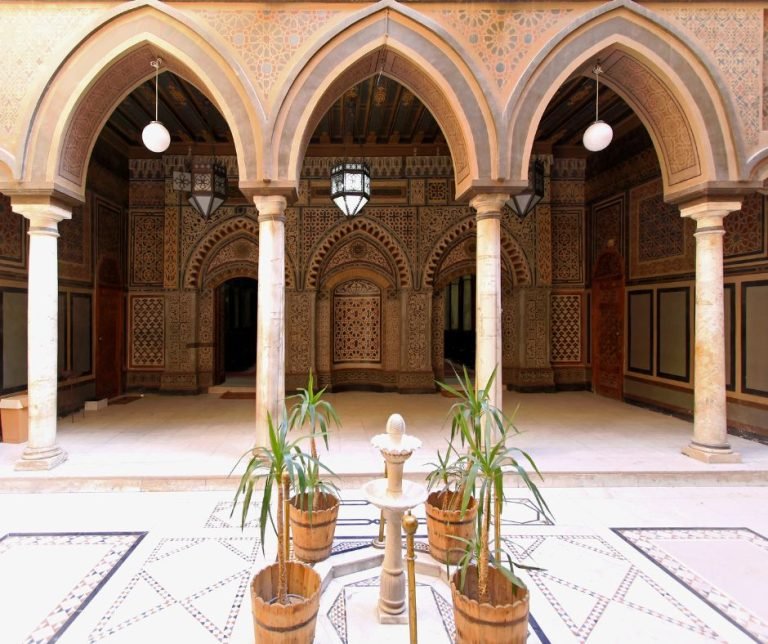
Preservation and Restoration
The Hanging Church has survived through the centuries, but it has not been immune to the ravages of time. Over the years, the church has undergone several restorations to repair damage caused by natural disasters, invasions, and the general wear and tear that comes with age. These restoration efforts have been crucial in preserving the church’s structural integrity and its many artistic treasures.
One of the most significant restoration projects took place in the late 20th century, under the supervision of the Egyptian Supreme Council of Antiquities. This project involved stabilizing the church’s foundations, which had been weakened by centuries of erosion and the shifting of the underlying earth. The restoration team also repaired and cleaned the church’s wooden beams, stone walls, and intricate carvings, ensuring that the church would continue to stand for future generations.
In recent years, the church has also benefited from modern conservation techniques, including climate control systems that protect its ancient artifacts from humidity and temperature fluctuations. These efforts have helped to preserve the delicate icons and wooden structures that make the Hanging Church such a unique and valuable part of Egypt’s cultural heritage.
While the church’s appearance has changed slightly over the centuries—due to both restoration efforts and natural aging—its spiritual and historical essence remains intact. Visitors today can still experience the same sense of awe and reverence that pilgrims felt centuries ago.
Visitor Experience
For modern-day visitors, the Hanging Church offers a truly immersive experience. As you approach the church, the first thing you’ll notice is its distinctive entrance—a narrow, covered stairway that leads up to the church’s elevated position. Climbing these steps is like ascending into a different realm, one that is far removed from the noise and chaos of the city below.
Once inside, the church’s quiet, dimly lit interior provides a stark contrast to the bright, bustling streets of Cairo. The air is thick with the scent of incense, and the soft light from candles and oil lamps creates a peaceful, almost otherworldly atmosphere. Whether you’re a religious pilgrim or a history enthusiast, the Hanging Church offers a space for reflection and contemplation.
Guided tours are available for those who want to learn more about the church’s history, architecture, and religious significance. These tours often include detailed explanations of the church’s icons, relics, and architectural features, providing a deeper understanding of the church’s role in Egypt’s cultural and religious landscape. For those interested in exploring at their own pace, informational plaques and brochures are available in multiple languages.
The Hanging Church is not just a museum piece—it is a living, breathing part of Cairo’s Christian community. Visitors are welcome to attend services, which are held regularly throughout the week. Experiencing a service at the Hanging Church is a powerful reminder of the church’s enduring role as a place of worship and community for Egypt’s Coptic Christian
Exploring the Surrounding Area
Old Cairo’s Religious Heritage
The Hanging Church is located in Old Cairo, a district rich in religious history and cultural significance. Known as Masr al-Qadima in Arabic, Old Cairo is home to some of the oldest and most important religious sites in Egypt. After visiting the Hanging Church, you can continue your exploration of this fascinating area, where the layers of history are visible in every stone and street.
One of the most notable sites nearby is the Ben Ezra Synagogue, which, according to tradition, is located on the spot where baby Moses was found in the reeds of the Nile. This synagogue, though primarily a museum today, remains a powerful symbol of Cairo’s Jewish heritage and its place in the broader tapestry of Egyptian history.
Another must-see is the Mosque of Amr ibn al-As, the first mosque built in Egypt and a significant landmark in the history of Islam. The mosque’s simple, austere design contrasts sharply with the ornate decorations of the Hanging Church, offering a fascinating glimpse into the diverse religious traditions that have shaped Cairo.
For those interested in delving deeper into Coptic history, the nearby Coptic Museum is a treasure trove of artifacts, manuscripts, and artwork. The museum’s extensive collection provides a comprehensive overview of Coptic culture, from its early beginnings to the present day. A visit to the Coptic Museum is an excellent complement to a tour of the Hanging Church, offering additional context and insight into the rich history of the Coptic Orthodox faith.
Local Culture and Cuisine
No visit to Cairo is complete without experiencing its vibrant local culture and cuisine. After exploring Old Cairo’s religious sites, take some time to wander through the nearby streets and markets, where you can soak up the sights, sounds, and flavors of this historic district.
The Khan el-Khalili bazaar, one of Cairo’s most famous markets, is just a short distance away. Here, you can browse a wide variety of goods, from traditional Egyptian handicrafts to spices, textiles, and jewelry. The market’s narrow, winding alleys are filled with the scent of freshly brewed coffee, the sound of vendors calling out their wares, and the vibrant colors of fabrics and ceramics.
When it comes to dining, Old Cairo offers a wide range of options, from street food stalls to traditional Egyptian restaurants. For a truly authentic experience, try some of the local dishes, such as koshari, a hearty mix of rice, lentils, pasta, and fried onions, or molokhia, a savory stew made from the leaves of the jute plant. Pair your meal with a glass of hibiscus tea or a cup of strong, sweet Egyptian coffee for the full experience.
Many of the local eateries are family-run establishments that have been serving the same traditional dishes for generations. Eating at one of these restaurants is not just a meal—it’s a chance to connect with Cairo’s rich culinary heritage and the warmth and hospitality of its people.
For those looking to take a piece of Cairo home with them, the markets and shops around Old Cairo offer a wide range of souvenirs, from handcrafted jewelry and textiles to religious icons and artwork. These items make for meaningful mementos of your visit to the Hanging Church and the surrounding area.
Conclusion
The Hanging Church of Cairo is more than just an architectural marvel or a historical landmark—it is a living testament to the enduring faith, culture, and resilience of Egypt’s Coptic Christian community. From its ancient origins atop a Roman fortress to its role as a spiritual sanctuary and cultural beacon, the Hanging Church has captivated and inspired countless generations of visitors.
Whether you’re drawn to its rich history, its stunning architecture, or its deep spiritual significance, a visit to the Hanging Church is a journey through time and faith. At Ancient Navigator, we are committed to offering our guests not just a tour, but an experience—one that connects you to the heart and soul of the places we visit.
We invite you to join us on this journey, to explore the Hanging Church and the many other wonders of Cairo, and to discover for yourself the stories that have shaped this incredible city. As you walk through the ancient streets of Old Cairo, from the sacred halls of the Hanging Church to the bustling markets and historic sites, you’ll find yourself immersed in a world where the past and present coexist in a delicate, timeless dance.
So when you plan your next adventure with Ancient Navigator, consider adding the Hanging Church to your itinerary. It’s not just an optional excursion—it’s an opportunity to connect with a piece of history that continues to resonate with meaning and significance, even after more than a thousand years.
Safe travels, and may your journey through Cairo’s ancient heart be as enriching as it is unforgettable.
Share this with your friends
Additional Blog Posts

Planning a Trip to Egypt? Here’s How Long You Need
Think you can “do” Egypt in 3 days? Think again. From ancient tombs to Nile-side secrets, this guide reveals why the magic of Egypt demands more than a layover—and shows you exactly how many days you really need to make it unforgettable. Don’t book that flight until you read this.

How Far Does $100 Go in Egypt?
Think $100 won’t get you far? In Egypt, it’s a game-changer. From luxury hotels to mouthwatering meals and ancient wonders, see how far your dollar really goes. This guide breaks down real costs, insider tips, and jaw-dropping experiences you can afford—without breaking the bank.

Private Egyptologist Tours: Unlock Egypt’s Hidden Secrets in Luxury
Step beyond the velvet ropes of Egypt’s most iconic sites. With a private Egyptologist as your guide, you’ll uncover hidden chambers, untold stories, and experience ancient wonders far from the tourist crowds. This is discovery at its most exclusive—where history meets luxury.

Egypt Temple Etiquette & Dress Tips for Luxury Travelers
Planning a luxury trip to Egypt? Don’t let poor wardrobe choices or etiquette missteps ruin your temple visits. This guide reveals what to wear, how to behave, and how to elevate your experience with style and cultural respect. Whether you’re aiming for stunning photos or exclusive access, you’ll learn how to navigate Egypt’s sacred sites like a seasoned elite traveler.
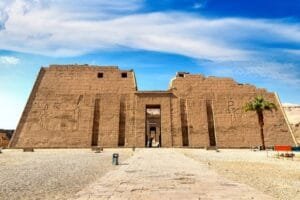
Why Medinet Habu Is Egypt’s Best-Kept Secret Temple
Most travelers never set foot in Luxor’s most breathtaking secret—Medinet Habu Temple. While crowds pack Karnak and the Valley of the Kings, this masterpiece of Ramses III stands quietly in the background, holding stories of power, battle, and beauty. Ancient Navigator takes you where others don’t—into Egypt’s hidden heart.

6 Luxury Egypt Moments You’ll Never Forget
Ready to experience Egypt like few ever do? From private tours of the Pyramids to exclusive Nile cruises and luxury stays, this guide reveals 6 unforgettable moments that will leave you breathless — and craving more. Discover how Ancient Navigator turns once-in-a-lifetime dreams into reality.




